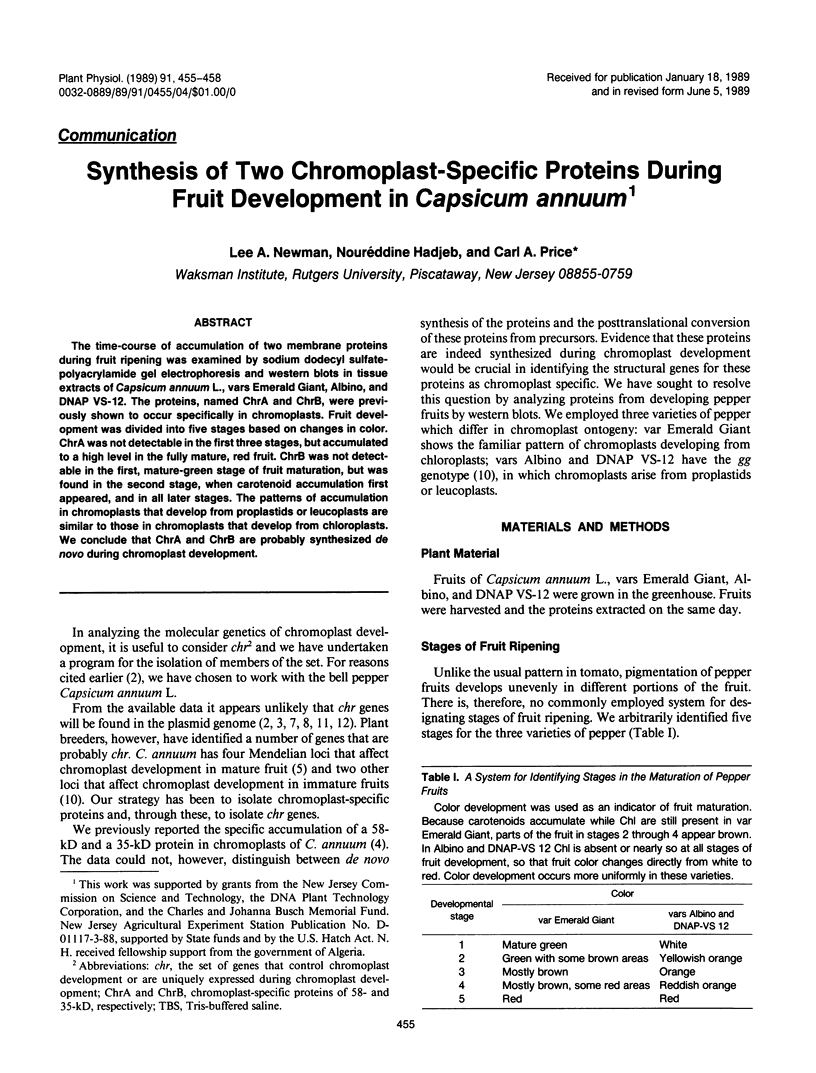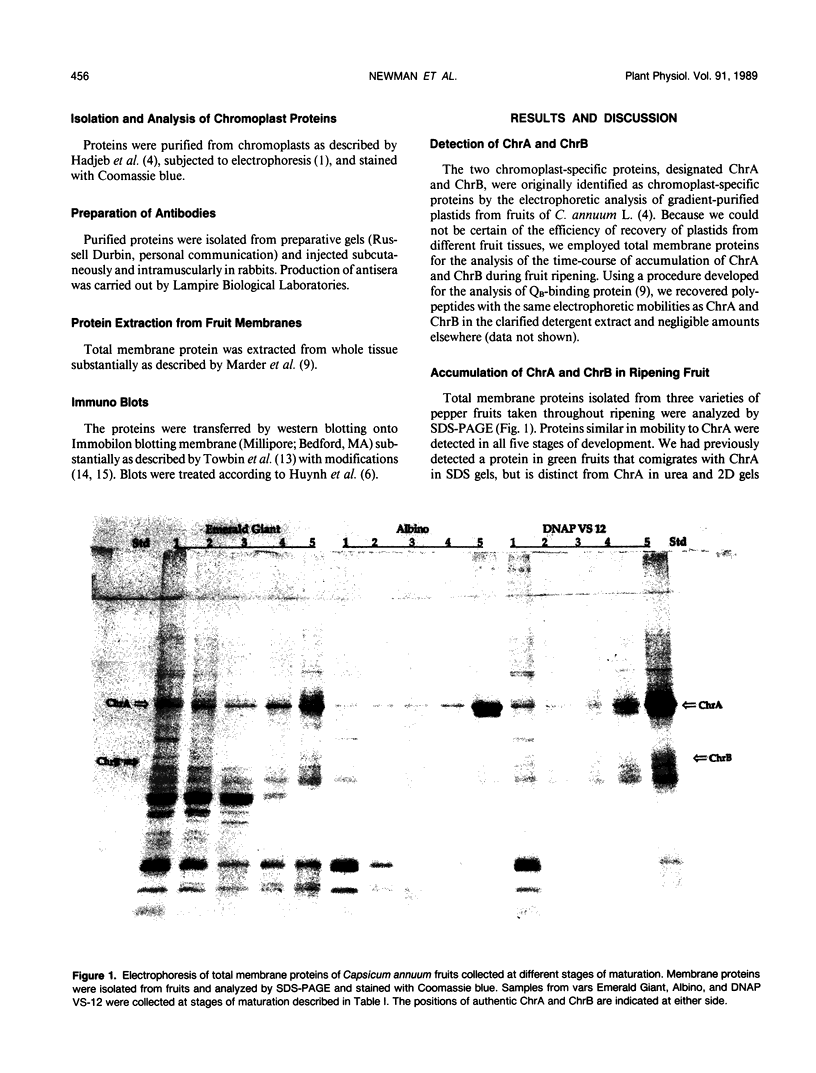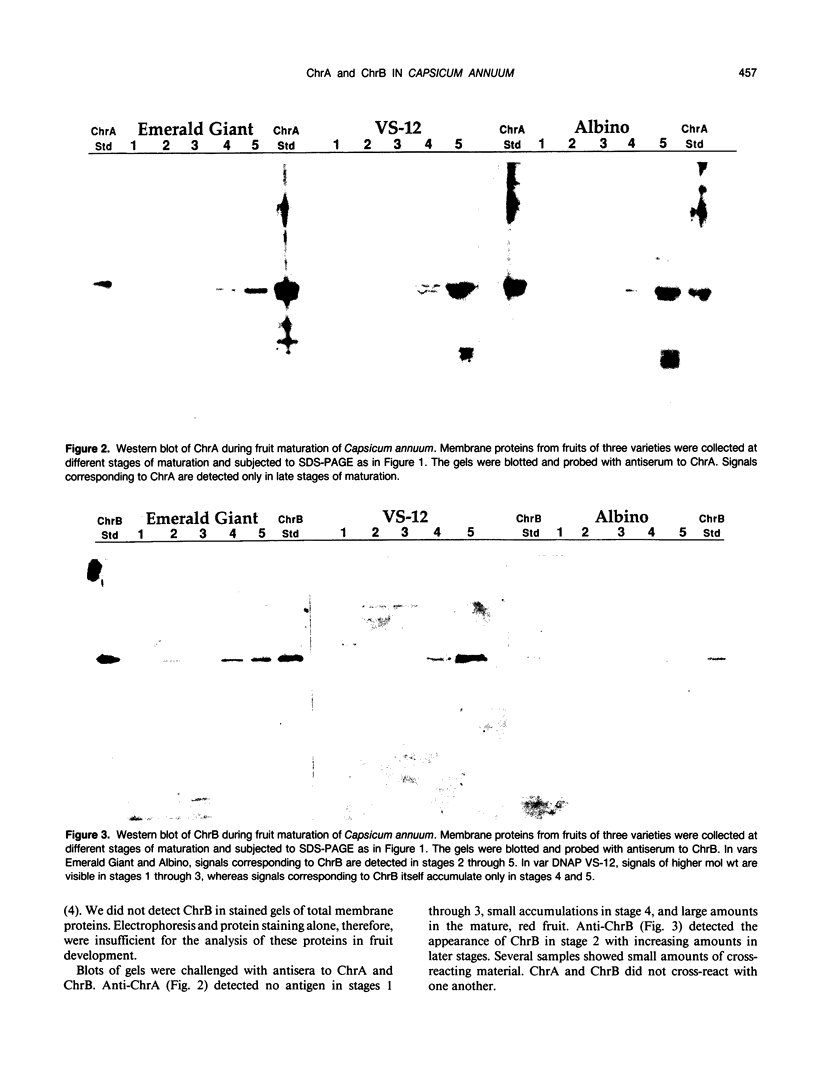Abstract
The time-course of accumuiation of two membrane proteins during fruit ripening was examined by sodium dodecyl sulfate-polyacrylamide gel electrophoresis and western blots in tissue extracts of Capsicum annuum L., vars Emerald Giant, Albino, and DNAP VS-12. The proteins, named ChrA and ChrB, were previously shown to occur specifically in chromoplasts. Fruit development was divided into five stages based on changes in color. ChrA was not detectable in the first three stages, but accumulated to a high level in the fully mature, red fruit. ChrB was not detectable in the first, mature-green stage of fruit maturation, but was found in the second stage, when carotenoid accumulation first appeared, and in all later stages. The patterns of accumulation in chromoplasts that develop from proplastids or leucoplasts are similar to those in chromoplasts that develop from chloroplasts. We conclude that ChrA and ChrB are probably synthesized de novo during chromoplast development.
Full text
PDF



Images in this article
Selected References
These references are in PubMed. This may not be the complete list of references from this article.
- Hadjeb N., Gounaris I., Price C. A. Chromoplast-Specific Proteins in Capsicum annuum. Plant Physiol. 1988 Sep;88(1):42–45. doi: 10.1104/pp.88.1.42. [DOI] [PMC free article] [PubMed] [Google Scholar]





